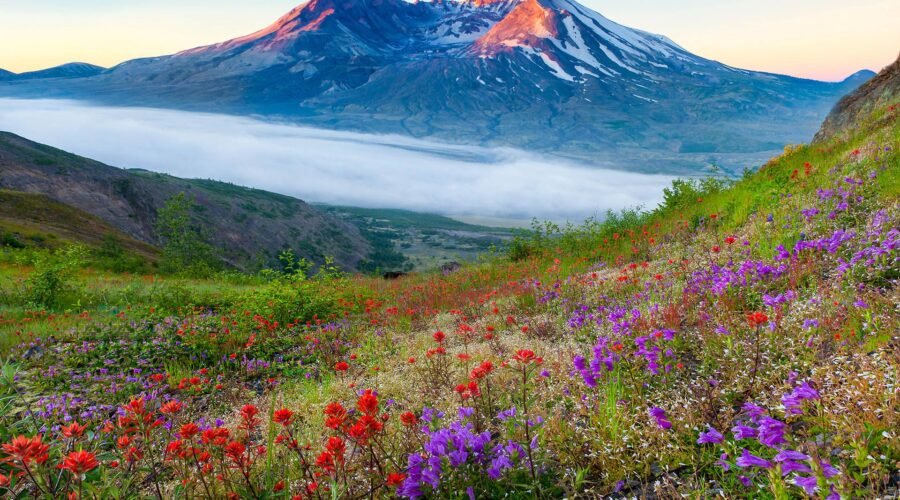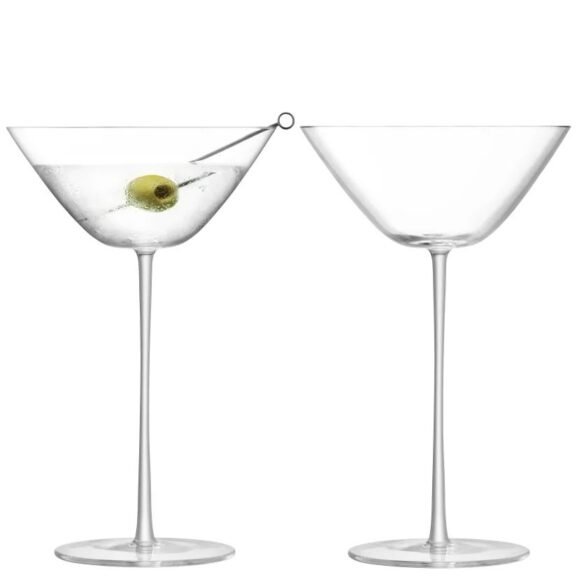Mount St. Helen Prepared Winemakers for Wildfires
People scrambled to buy masks. An airborne contaminant threatened the grape harvest while closing schools and businesses. But this wasn’t 2020, with its double whammy of COVID-19 and wildfires. This was 1980 after Mount St. Helens blew its top at 8:32 a.m. on Sunday, May 18.
Mike Sauer, who planted his first vines at Red Willow Vineyard in Wapato, Washington, in 1973, was at church with his family that morning. He remembers walking outside to a horizon of ominous dark clouds. “As we drove home, I could see the ash coming up behind the car,” Sauer says.
On that morning, Mount St. Helens covered over 22,000 square miles to its northeast with 540 million tons of ash. Agrimanagement Inc., an agriculture consulting company in Yakima, estimated that a half-inch deposit on the ground was the equivalent of 70–85 tons of ash per acre.
Three-quarters of an inch of ash covered everything at Red Willow Vineyard. “That means one acre of our surface area was probably covered with around 120 tons of ash. That’s a lot of volume,” Sauer says.
You May Also Like: The Prehistoric Roots of Volcanic Terroir
Dick Boushey, who had just planted his first vinifera vines outside Grandview, Washington, was visiting Seattle when he actually heard the volcano explode. He rushed home to discover ash covering his orchards and Boushey Vineyard. “Ash blotted out the sun for three days. It was traumatic,” Boushey says. “We had two to three inches of ash, and we didn’t know when it would stop falling.”
Kerry McDaniel Boenisch is an author and firstgeneration commercial winegrower whose father, Jim McDaniel, planted the family’s eponymous vineyard in Dundee Hills in 1972. She watched the massive ash plume rising from Mount St. Helens from her perch atop a high point in the Chehalem Mountains. She calls what she saw that day “apocalyptic.”
Encores and Aftershocks
While winds pointed away from the Portland area on May 18, Mount St. Helens cleared its throat five more times that year, with ash reaching vineyards as far south as the Willamette Valley. The June 12 eruption infamously coincided with the Grateful Dead playing “Fire on the Mountain” at their Portland show as ash painted the city.
Bill Wayne says that ashy paint turned everything at his Abbey Ridge Vineyard a “dismal gray.” Wayne, who, along with his wife, Julia, planted his first vines in the Dundee Hills in 1977, used his 1980 fruit to make a home wine that he describes as “not great.” Wayne, however, refuses to blame the mountain for the suboptimal outcome.
Founders Pat and Joe Campbell watched ash fall heavily on their vines at Elk Cove Vineyards in Gaston. Their son and winemaker Adam Campbell estimates the estate accumulated a half-inch of ash that June.
Anna Campbell, Adam’s sister, adds that some of her earliest memories of their parents working in the vineyards involved them wearing paper masks because of the ash. “We for sure had jars and jars of ash collected at some point,” she says.
Unfortunately for the Campbells, the ash fell at a bad time. “We probably had two feet of vine growth and were pre-bloom, so the damage that was done was shoot breakage due to the weight of the ash and lower photosynthesis abilities of the vine,” Adam Campbell explains. In response to significantly lower yields that year, Adam Campbell says his family needed to access low-interest loans through a federal disaster assistance program.
You May Also Like: Don’t Be Afraid of Napa and Sonoma’s ‘Smoke Vintage’
Farther south in Salem, Oregon, Pat Dudley and Ted Casteel vividly remember the ash turning their red soils at Bethel Heights gray the night before the winery’s inaugural Pinot Noir harvest. Casteel is captured in family photos carrying his infant son in a backpack while picking grapes amid the ash on October 17, 1980.
Joel Myers, the founder of Vinetenders, a vineyard management company, and Siltstone Wines, worked for David Lett of The Eyrie Vineyards in 1980. Myers recalls ash dusting the fruit in the Lett family’s estate vineyard close to veraison in August, with a lighter skiff arriving just before harvest in October.
When the first ash arrived at The Eyrie Vineyards, Myers says, “We weren’t getting as much as the Washington guys got, but we were like everyone else and freaked out.” Given that a volcano showering ash on Pacific Northwest vineyards was unprecedented, some “freaking out” was to be expected.
Boushey, for example, says he imagined a “worst case scenario” where “everything would be smothered, photosynthesis wouldn’t take place, everything would die, and we wouldn’t have a crop. We had little kids then, we had just started with wine grapes, my wife was teaching, and we were financially stretched.”
The Damage Done
Like wildfire concerns in 2020, the Pacific Northwest wine community initially wondered what was in the ash and whether it would penetrate grape skins. McDaniel Boenisch says, “We were very surprised when we realized the ash wasn’t penetrating the skins.”
The ash was packed with silicon dioxide, aka silica, which didn’t penetrate the grapes but caused problems for the eyes, nasal passages, engines and the metal blades of agricultural equipment, which the ash tended to chew up.
That’s when vineyard owners and managers showed they had just as much grit as the ash that plagued them. As Sauer puts it, “Farmers basically deal with what’s in front of them, and we had to get that ash off.”
Sauer, concerned about photosynthesis in his vineyard’s leaf canopy, allowed nature to take its course to remove ash with rain, wind, irrigation and gravity. Boushey also took to the water, using his overhead sprinklers to wash everything down.
McDaniel Boenisch describes the Willamette Valley farmers as very “MacGyver-like” in the early days, saying her family likely deployed garden hoses to deal with their ash. Myers, known throughout the Willamette Valley for his own MacGyvering skills, rigged up a tractor with a fungicide sprayer filled with water and started power blasting approximately 15–16 acres of vines at The Eyrie Vineyards. He remembers the project took a few days and over a hundred gallons of water per acre.
You May Also Like: Willamette Valley AVA Turns 40: The Spots Moving the Wine Region Forward
When the second ashfall hit The Eyrie Vineyards closer to harvest, Myers says they nixed a repeat rinse. “By then, we knew the ash was mostly silica and inert, so we didn’t bother. Besides, we could have been driving more ash into the clusters than we would be rinsing off.”
When all was said and done, the 1980 harvest happened. Some Washington and Oregon wineries may have produced less wine that year, but good wine was made. The late David Lake of Associated Vintners, with help from Red Willow Vineyard fruit, made quality wines in 1980—the labels cheekily featured a small logo showing Mount St. Helens with an ash plume.
Sauer believes that the ash, which in addition to silica includes aluminum, sodium, magnesium and iron oxides, may have even had a beneficial impact on his vineyard soils that showed itself in the 1981 vintage. Having recently tried the 1981 AV Red Willow Vineyard Cabernet Sauvignon with Sauer, I won’t question his claim. I was impressed with the wine’s beautiful aromatics. While the fruit may have faded, the wine’s secondary characteristics, tannic structure and sense of history were memorable.
Willamette Valley also produced some gems amid the ash, with Myers declaring the Eyrie wines made in 1980 “beautiful.” This was no surprise to McDaniel Boenisch, whose family sold fruit to Dick Erath in 1980. She says, “If anyone could make a wine with ash taste good, it was David Lett and Dick Erath.”

Many Different Ways to Lose Fruit
It was a whole new world for growers impacted by Mount St. Helens. They faced uncertainty and an unprecedented natural disaster that would offer a preview of things to come 40 years later when wildfires became an annual occurrence.
Important lessons were learned in 1980, the most important of which might be to do everything possible to ensure the wine gets made. “Being a first-generation grower in a young region, it was all a big experiment back then anyway,” McDaniel Boenisch says. “Ash just added to the chemistry test part of the experiment.”
The ash-kicking delivered by Mount St. Helens gave Boushey a confidence boost that he also appreciated as a young winegrower. He remembers thinking that after dealing with a volcano, he could get through anything.
These days Boushey manages vineyards other than his own. Whether facing frost fright or wildfire threat, Boushey tells his often jittery clients that if they farm long enough, they will experience many different ways to lose fruit.
“Don’t freak out, live with it and move on” is the post-eruption philosophy that Boushey shares with them.
This article originally appeared in the Winter 2024 issue of Wine Enthusiast magazine. Click here to subscribe today!

Bring the World of Wine to Your Doorstep
Subscribe to Wine Enthusiast Magazine now and get 1 year for $70 $29.99.
Published: February 29, 2024
Like what you’re reading? Learn more about:


